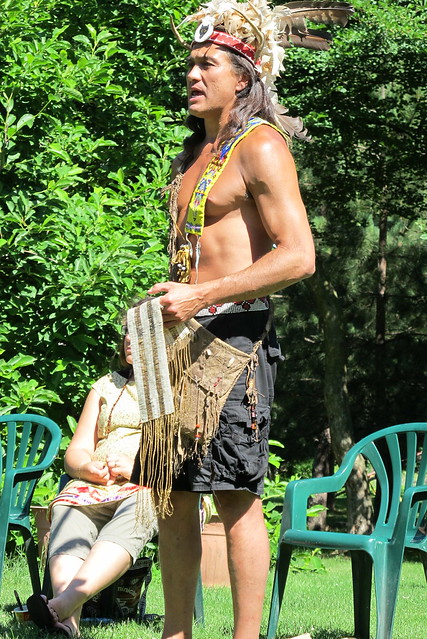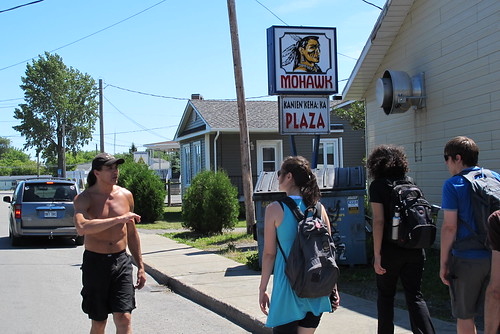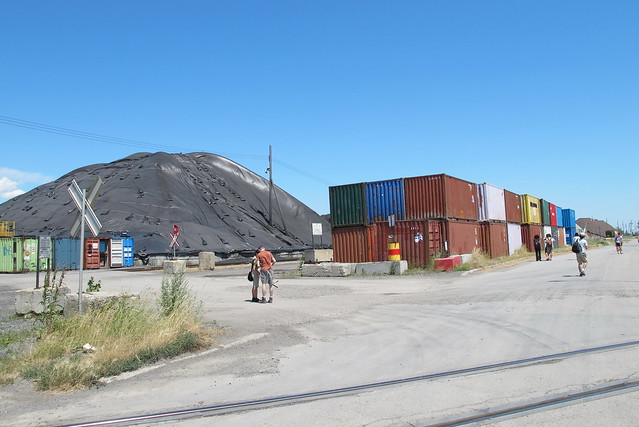First of all, I apologize for my long absence from the blog, as I’ve just spent the last month in Berlin. Just two days before I embarked on my first jaunt across the Atlantic, I completed the second edition of Walk the Region, trecking from Kahnawake to Terrebonne in order to discover another slice of the land and people that compose Metropolitan Montreal.
This year, the theme for Walk the Region was “Invisible places,” and perhaps no place in the region is quite as invisible as the Kahnawake Mohawk territory. I understand that Kahnawake is not officially part of the municipalities that make up the Communauté Métropolitaine de Montréal, but take a look at this CMM map: Kahnawake is simply NOT THERE.
So we set out to discover our oft-ignored neighbouring Nation, and to do so we sought the blessing of the Traditional Mohawk council. After assuring them that Walk the Region is neither a political nor a religious association, they welcomed us with open arms and even offered to organize an opening ceremony. While most people I meet think it’s a little odd to walk over 75 km, through an essentially urban area, without at least trying to raise money for something, Stewart and the other council members we met seemed to intuitively understand our desire to simply experience the lay of this land we inhabit and to share this knowledge with other citizens of the region.
As Joel said, “We’re crossing bridges by foot to build bridges between communities.”
On Saturday morning, Stewart led the opening ceremony and presented the Two-Row Wampum (the beaded belt in the photo above) a symbol of the historic 5-nations peace treaty with the Dutch in the 17th century. The two parallel rows represent the Iroquois and the European peoples leading parallel lives, peacefully but never intersecting so as to preserve the native culture.
Stewart’s family has certainly maintained a beautiful piece of green land, garden, and the most awesome junglegym I have ever seen. But Kahnawake has seen it’s share of struggles over land use. Stewart’s elderly father spoke of how his own mother had fought to save this land from being sold from the Mohawk Nation or converted into a casino. Stewart described the Saint-Lawrence seaway as a “weapon of destruction,” due to the way it divided the Mohawks’ land in 1953, and removed the people’s access to the river (you can read a whole academic article about it here).
As we walked through the community, accompanied by a small caravan of minivans, Stewart also described how some local residents were renting their land as a dump for landfill (earth and other materials) at $10 per truckload. He pointed out a building on the reservation where a number of online dating and gambling sites have their headquarters, and it struck me how surprising it was to see the mark of these ephemeral Internet trends on the landscape.
After about two hours, we reached the edge of the reservation, or as Stewart said, the “imaginary imposed border” of Kahnawake.
Wahéhshon, the Mother of the Wolf clan presented me with a beaded necklace meant to protect us throughout our travels. We bid our hosts adieu, and crossed from the lush green of Kanhawake into the technicolor train yards of Sainte-Catherine.




One comment
I missed your posts. I look forward to reading them. Glad you’re back from abroad and in fine writing form.
I’ve been following the posts “Walking” and “Invisible” series with interest. I noted your reference to the “black hole” that exists for Kahnawake on the CMM map.
If you go north on that same map and reference “Oka,” you’ll find a similar “black hole” for Kanehsatake. In fact, if you go to the Oka Ferry there’s a map in front of the Municipal Building that shows various landmarks and shops in the area defined on compass points by Oka, La Trappe, Ste Placide and St. Benoit. But there’s nothing on that map – nada – to indicate anything of the Mohawk territory within that area; not its gas station, health centre, schools, B&B, coffee roaster, orchards, community gardens, or other small businesses.
We are very much rendered “invisible” or non-existent by officials in the region. Good series. Enjoy them muchly.